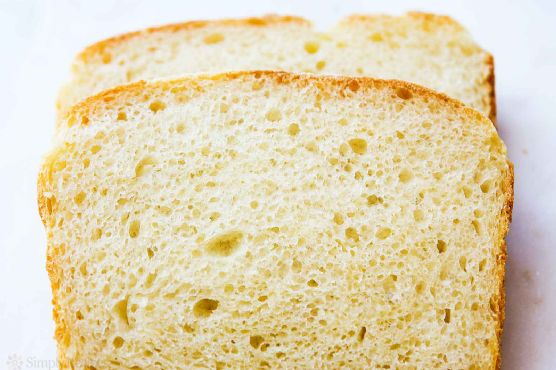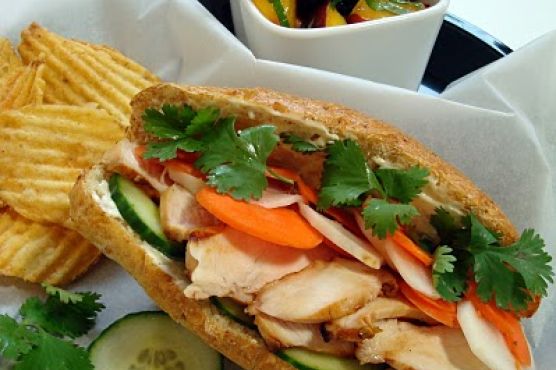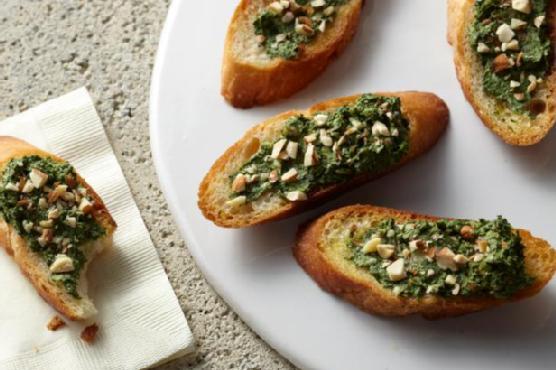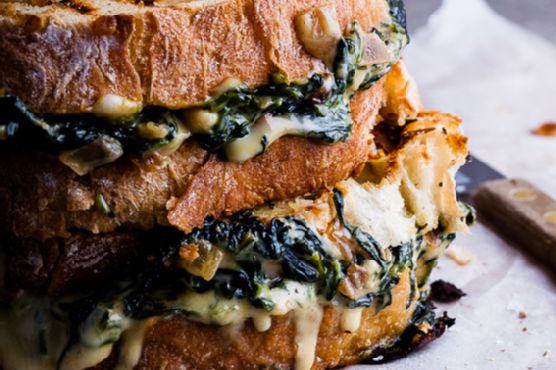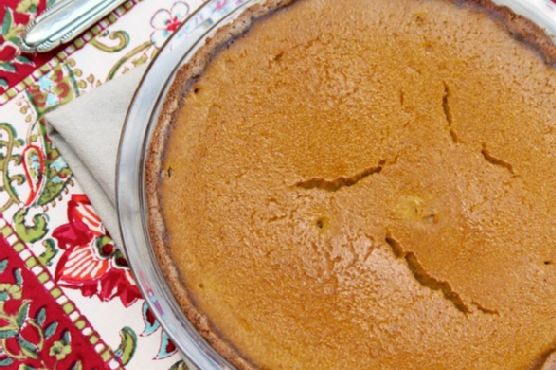Homemade Potato Bread
Homemade Potato Bread could be just the lacto ovo vegetarian recipe you've been looking for. This recipe makes 16 servings with 213 calories, 7g of protein, and 3g of fat each. For 23 cents per serving, this recipe covers 9% of your daily requirements of vitamins and minerals. This recipe is liked by 554 foodies and cooks. A mixture of russet potato, instant yeast, olive oil, and a handful of other ingredients are all it takes to make this recipe so tasty. From preparation to the plate, this recipe takes roughly 45 minutes. It is brought to you by Simply Recipes. With a spoonacular score of 90%, this dish is outstanding. Similar recipes are Homemade Potato Bread, Super Easy Semi-homemade Potato Laced Bread Sticks, and Homemade Ciabatta Bread {And The Best Garlic Bread On Earth}.
Servings: 16
Ingredients:
5 cups (680g) all purpose flour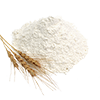
1 packet instant yeast (2 1/4 teaspoons)
2 cups (475 ml) milk
2 Tbsp olive oil
1 large russet potato (about a 12 oz potato)
2 teaspoons salt
1 teaspoon sugar
Equipment:
microwave
pot
sauce pan
whisk
mixing bowl
bread machine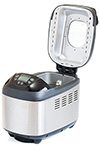
bowl
plastic wrap
loaf pan
oven
knife
Cooking instruction summary:
1 Cook, peel, mash the potato: You will need 6-8 ounces of mashed potato for this potato bread recipe. That's between 3/4 cup andone cup of mashed potatoes.The easiest way to cook the potato is to poke it all over with the tines of a fork and microwave it 4 minutes on one side, 4 minutes on the other side, on high. Let it cool, then peel it, and mash it with a fork.Or, you can boil the potato. Peel the potato, cut it into large chunks, cover it with water in a pot, bring to a simmer, and cook for 10 minutes or so until a fork easily goes through the potatoes, drain, cool, and mash.2 Heatthe milk, whisk in mashed potato: Heat 2 cups of milk in a medium saucepan, until it is steamy, then remove from heat. Whisk in the salt, sugar, olive oil and the mashed potato.Pour into the mixing bowl of a standing mixer (or just a large bowl if you don't have a mixer), and let cool until it is still warm, but no longer hot, to the touch. (If the mixture is too hot, it will kill the yeast in the next step.)3 Add yeast and 2 cups of flour: Stir in the yeast. Stir in 2 cups of theflour. Usea standing mixer such as a KitchenAid (recommended), attach the mixing paddle, andmix on medium high speed for 4 minutes. This will help break up any potato lumps and help incorporate the mashed potatoes into the dough.(If you are using a bread machine, put the milk potato mixture, the yeast, and all of the flour into the bread machine and knead for 8minutes, skip the next step and proceed to step 5.)4 Add the remaining flour and knead: Swap out the mixing paddle for the dough hook on your mixer. Add the remaining 3 cups of flour and mix on medium low speed for 8minutes. The dough should be rather loose and a little tacky.5 Put dough into a large bowl, let dough rise: Rub the inside of a large bowl with some olive oil. Transferthe dough from the mixing bowl and put it into this large bowl (can use your mixing bowl if you clean it, and coat the inside with oil). Gently coat the top of the dough with a little olive oil.Cover the bowl with plastic wrap or a dampened towel (to prevent the dough from drying out). Place in a warm spot for 2 hours or overnight. The dough should at least double in size. You'll know when it has risen sufficiently when you press into the top with your fingertip and the indentation remains for a while.6 Punch down the dough, place in loaf pans: Press down on the dough with your hand to deflate it. Turn it out onto a clean lightly floured surface and knead a couple of times. Cut the dough into two halves (a pastry scraper comes in handy for this). Rub a little olive oil inside of two 8x4-inch loaf pans. Place a dough half in each and press the dough into the bottom of the pans. 7 Let dough rise again: Coat the top of the loaves with a little olive oil. Cover the loaf pans with plastic wrap and put in a warm place for 45 minutes to an hour or longer, until the dough has doubled in size.8 Bake: Preheat oven to 350F (175C). Remove the plastic wrap from the loaf pans and gently place the loaf pans in the oven in the middle rack. Bake for 35 minutes until the crust is golden brown and the internal temperature is between 190 and 200F.While the bread is still warm in the pan, use a dull dinner knife and run along the edge of the panbetween the pan and the bread to loosen the bread from the pan. Turn out of the loaf pans on to a rack, let cool completely before slicing.
Step by step:
1. 1 Cook, peel, mash the potato: You will need 6-8 ounces of mashed potato for this potato bread recipe. That's between 3/4 cup andone cup of mashed potatoes.The easiest way to cook the potato is to poke it all over with the tines of a fork and microwave it 4 minutes on one side, 4 minutes on the other side, on high.
2. Let it cool, then peel it, and mash it with a fork.Or, you can boil the potato. Peel the potato, cut it into large chunks, cover it with water in a pot, bring to a simmer, and cook for 10 minutes or so until a fork easily goes through the potatoes, drain, cool, and mash.2
Heatthe milk, whisk in mashed potato
1. Heat 2 cups of milk in a medium saucepan, until it is steamy, then remove from heat.
2. Whisk in the salt, sugar, olive oil and the mashed potato.
3. Pour into the mixing bowl of a standing mixer (or just a large bowl if you don't have a mixer), and let cool until it is still warm, but no longer hot, to the touch. (If the mixture is too hot, it will kill the yeast in the next step.)3
4. Add yeast and 2 cups of flour: Stir in the yeast. Stir in 2 cups of theflour. Usea standing mixer such as a Kitchen
5. Aid (recommended), attach the mixing paddle, andmix on medium high speed for 4 minutes. This will help break up any potato lumps and help incorporate the mashed potatoes into the dough.(If you are using a bread machine, put the milk potato mixture, the yeast, and all of the flour into the bread machine and knead for 8minutes, skip the next step and proceed to step 5.)4
6. Add the remaining flour and knead: Swap out the mixing paddle for the dough hook on your mixer.
7. Add the remaining 3 cups of flour and mix on medium low speed for 8minutes. The dough should be rather loose and a little tacky.5 Put dough into a large bowl, let dough rise: Rub the inside of a large bowl with some olive oil.
8. Transferthe dough from the mixing bowl and put it into this large bowl (can use your mixing bowl if you clean it, and coat the inside with oil). Gently coat the top of the dough with a little olive oil.Cover the bowl with plastic wrap or a dampened towel (to prevent the dough from drying out).
9. Place in a warm spot for 2 hours or overnight. The dough should at least double in size. You'll know when it has risen sufficiently when you press into the top with your fingertip and the indentation remains for a while.6 Punch down the dough, place in loaf pans: Press down on the dough with your hand to deflate it. Turn it out onto a clean lightly floured surface and knead a couple of times.
10. Cut the dough into two halves (a pastry scraper comes in handy for this). Rub a little olive oil inside of two 8x4-inch loaf pans.
11. Place a dough half in each and press the dough into the bottom of the pans. 7
12. Let dough rise again: Coat the top of the loaves with a little olive oil. Cover the loaf pans with plastic wrap and put in a warm place for 45 minutes to an hour or longer, until the dough has doubled in size.8
13. Bake: Preheat oven to 350F (175C).
14. Remove the plastic wrap from the loaf pans and gently place the loaf pans in the oven in the middle rack.
15. Bake for 35 minutes until the crust is golden brown and the internal temperature is between 190 and 200F.While the bread is still warm in the pan, use a dull dinner knife and run along the edge of the panbetween the pan and the bread to loosen the bread from the pan. Turn out of the loaf pans on to a rack, let cool completely before slicing.
Nutrition Information:
covered percent of daily need
